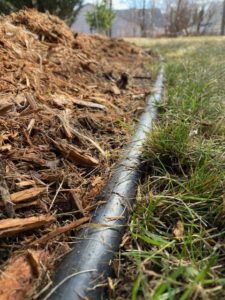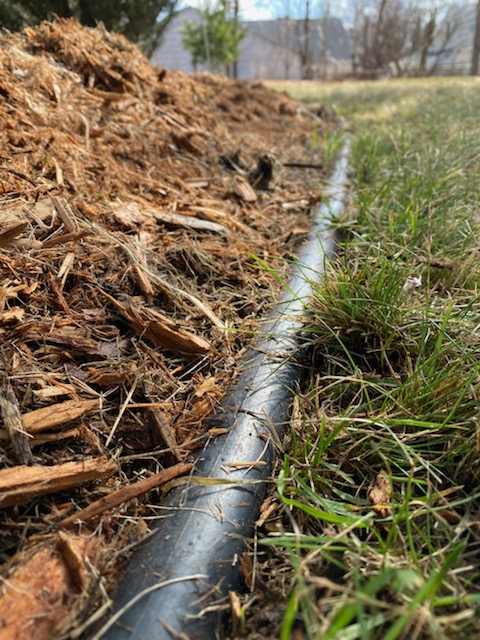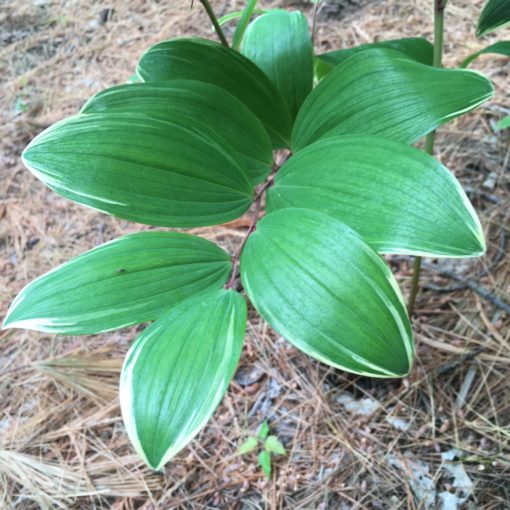In the spring we work to set up the garden for a season full of success. Some of the tasks that we undertake during the start of the season include things like cutting the edges of all the garden beds. This can take a slightly different form based on the type of garden bed edging that exists.
For most garden beds that have an established physical edge, such as plastic tubing, pavers, or metal edging, we would cut along the outside of the edging, along the edge of the lawn. This prevents grass from creeping into and under the edging and into the garden beds. We would then push mulch back from the inside edge and cut a depression a few inches deep depending on the height of the edge, the soil level, and the volume of mulch present. By making a depression or ditch inside the edging, we are creating an area where mulch can settle when it is naturally eroded by heavy rains or winds. This creates a nice neat edge that will endure for the whole season.
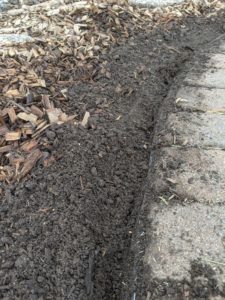
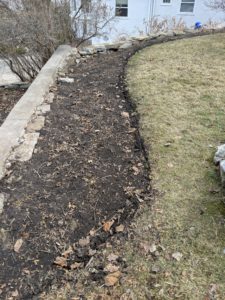
In the case of garden beds that do not have physical edging, a more significant form of edge cutting which we refer to as “ditch edging” must occur in order to fulfill the purposes of the previous technique. In a ditch edge, the mulch is pushed back from the edge, a shovel is used to cut a 3″ deep seam, and the soil from that seam is crumbled and spread in the area where the mulch was pushed out. The ditch that is formed both prevents grass from creeping in as well as creating a space for mulch to settle without washing out into the lawn or across pavement or other surfaces.
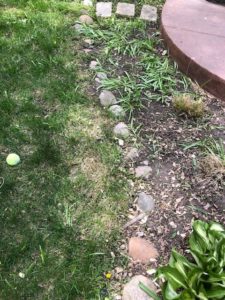
Another type of edging that is a bit like a physical edge but needs to be treated like a ditch edge is stone or boulder edging. In the case of these edges, the stones or boulders act as a visual edge, and can also provide a barrier to prevent mulch from eroding out of the garden bed, but they are not doing much to prevent roots from creeping into or out of the bed. Additionally, stone and boulder edging naturally sinks over time, making it disappear into the soil and look messy. By removing the stones or boulders, creating a ditch edge, and replacing the stones, the look and function of the edge is restored. What a before and after!
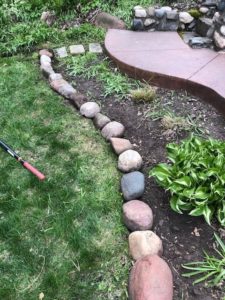
During the busy spring season taking the time to properly prepare garden edges is a task that can pay back dividends in preserved materials and labor costs. As the saying goes, “proper preparation prevents poor performance”! If you've ever noticed a sidewalk or driveway that is covered in mulch runoff after a heavy spring rain, you know the truth to this statement!
